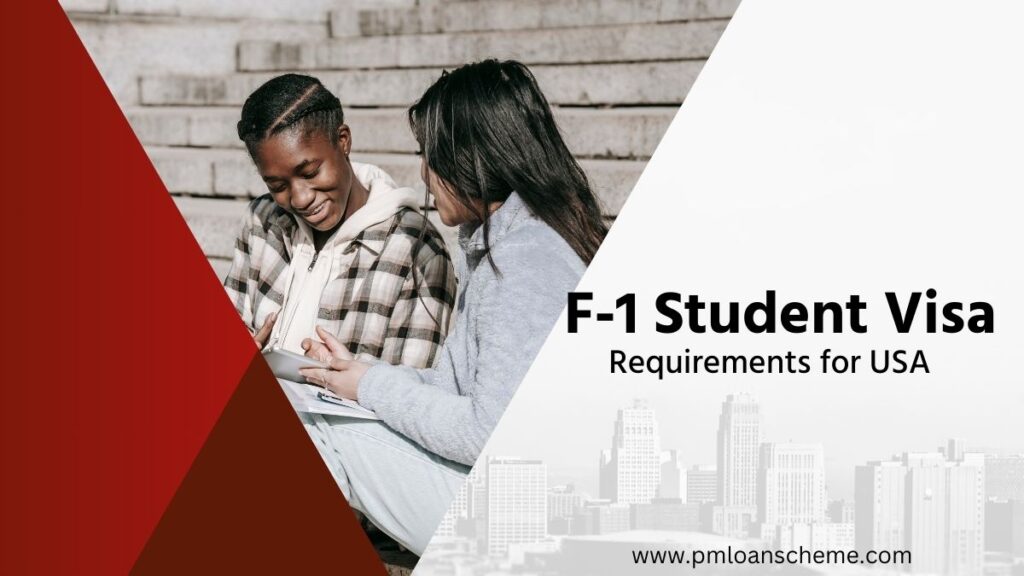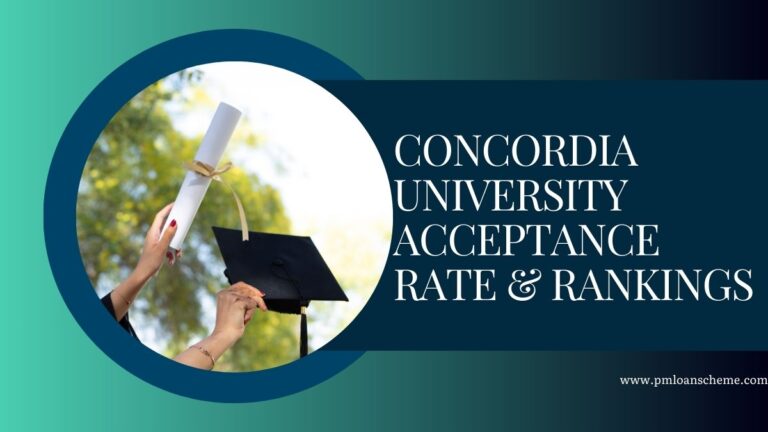F-1 Student Visa Requirements for USA 2024: To study in the United States, international students need to understand the process of applying for an F-1 student visa. With over one million students from around the world currently studying in the U.S., you too can achieve this goal with the right preparation.
This guide explains what the F-1 visa is, the rules associated with it, and the steps needed to meet F-1 visa requirements.
What is the F-1 Visa?
The F-1 visa is a non-immigrant visa specifically for international students who wish to study full-time at U.S. colleges, universities, or other educational institutions accredited by the Student and Exchange Visitor Program (SEVP). This is the most commonly issued visa for international students in the US To apply, you must first receive acceptance from a US institution that is SEVP-certified.

As an F-1 visa holder, your stay in the US is determined by the duration of your academic program. Your institution will provide a document called the I-20 form, which specifies your program’s end date. You are expected to complete your degree within this timeframe.
After graduation, you may be eligible for Optional Practical Training (OPT), which allows you to work in the U.S. for up to 12 months in a field related to your studies. If you graduate from a STEM program, you can apply for an additional 24-month OPT extension. Without further extensions, you must leave the U.S. within 60 days of completing your studies.
Requirements for F-1 Student Visa
To successfully apply for an F-1 student visa, you need to meet several requirements:
- Accredited Institution: The U.S. school you attend must be certified by SEVP.
- Full-Time Enrollment: You must be enrolled full-time for each academic term.
- English Proficiency: You must demonstrate sufficient English skills or be enrolled in courses to improve your language proficiency.
- Financial Support: You need to show proof of sufficient funds to cover tuition and living expenses.
- Valid Passport: Your passport must be valid for at least six months beyond your program end date.
- Residency in Home Country: You must have a permanent residence in your home country that you intend to return to after your studies.
Process to Apply for F-1 Visa for International Students
- Acceptance to a SEVP-Certified School and Obtain Form I-20: The first step to securing an F-1 visa is acceptance to a U.S. institution that is SEVP-certified.
- This certification confirms that the institution meets U.S. government requirements for educating international students. After acceptance, your school will issue an I-20 form.
- This document outlines your intended program details, including your SEVIS ID, program start and end dates, chosen field of study, funding sources, and the estimated cost of attendance. This information is recorded in the Student and Exchange Visitor Information System (SEVIS).
- Review and Sign the I-20 Form: Once you receive your I-20 form, verify that all information is accurate, then sign it on the first page.
- Any errors should be corrected immediately, as they could delay your entry to the U.S. Bring your I-20 form with you when you travel to the U.S.
- it will be required for entry, work authorization, and activities like obtaining a U.S. driver’s license.
Cheap Universities in USA for MS
Eligibility Requirements
To qualify for a U.S. student visa, applicants must meet certain eligibility criteria:
- Acceptance into a SEVP-Approved School: You must first apply to and be accepted by a U.S. institution that is certified by the Student and Exchange Visitor Program (SEVP).
- Proof of Financial Support: Applicants must demonstrate they have sufficient funds to cover their tuition, living expenses, and other costs without relying on U.S. government assistance. This financial proof can include bank statements, sponsor letters, or affidavits.
- Strong Ties to Home Country: To prove you do not intend to immigrate, consular officers often require evidence of strong ties to your home country, like family connections, property ownership, or a job offer upon return.
Step-by-Step Visa Application Process
Step 1: Receive and Complete the Form I-20 or DS-2019
- Once accepted into an SEVP-approved institution, you’ll receive Form I-20 (for F-1 and M-1 visas) or Form DS-2019 (for J-1 visas). These forms are essential as they confirm your admission and provide details for visa processing.
Step 2: Pay the SEVIS Fee
- The SEVIS (Student and Exchange Visitor Information System) fee helps maintain the database that tracks international students in the U.S. The fee payment must be completed before your visa interview.
Step 3: Submit the DS-160 Form
- All non-immigrant visa applicants, including students, need to fill out the DS-160 form online. This form gathers essential biographical information and details about your travel intentions. After submitting, you’ll receive a confirmation page, which is needed for the visa interview.
Step 4: Schedule and Prepare for Your Visa Interview
- Scheduling an appointment with the U.S. embassy or consulate in your home country is necessary for your visa interview. During this interview, a consular officer will evaluate your application and ask questions to confirm your eligibility.
- Prepare to explain your academic goals, why you chose this specific institution, and how you plan to fund your studies. Bring all required documents, including your passport, I-20 or DS-2019 form, SEVIS fee receipt, and proof of financial support.
Step 5: Attend the Visa Interview
- The visa interview is a critical part of the process. Be honest and concise with your answers, emphasizing your intent to return to your home country after completing your studies. The consular officer may ask about your future plans, ties to your home country, and your reasons for selecting the U.S. as your study destination.
Preparing for Arrival in the U.S.
After a successful visa application, make sure you’re familiar with the U.S. entry requirements. Typically, you can enter the U.S. up to 30 days before your program start date if you hold an F-1 or M-1 visa. At the port of entry, carry all important documents (passport, visa, I-20 or DS-2019) to present to the immigration officer.
Frequently Asked Questions (FAQs) About the F-1 Student Visa
What is an F-1 Student Visa?
An F-1 visa is a non-immigrant visa that allows international students to study full-time at an accredited U.S. institution. It is the most common type of student visa and is issued to those who are enrolled in academic programs such as universities or colleges approved by the Student and Exchange Visitor Program (SEVP).
How do I apply for an F-1 Visa?
To apply for an F-1 visa, you must first be accepted by a SEVP-certified U.S. institution. After acceptance, the school will provide you with the Form I-20, which is needed to apply for your visa. Once you have the I-20, you can schedule a visa interview at a U.S. embassy or consulate.
What documents do I need to apply for the F-1 visa?
To apply for an F-1 visa, you will typically need the following documents:
1.A valid passport
2.Form I-20 issued by your U.S. school
3.Proof of financial support to cover tuition and living expenses
4.Visa application fee payment receipt
5.SEVIS fee payment receipt
6.Passport-sized photos as per U.S. visa requirementsCan I work on an F-1 Visa?
Yes, F-1 visa holders can work in certain situations:
1.On-campus employment: You can work up to 20 hours per week during the semester and full-time during breaks.
2.Optional Practical Training (OPT): After completing your degree, you may be eligible for up to 12 months of work in the U.S. in a field related to your studies. STEM graduates can apply for an additional 24-month extension.How long can I stay in the U.S. with an F-1 Visa?
Your stay in the U.S. depends on the length of your academic program, as stated on your Form I-20. After completing your studies, you are allowed a 60-day grace period to prepare for departure or apply for further options, such as OPT.
Can I extend my F-1 Visa?
An F-1 visa itself cannot be extended. However, if you need more time to complete your studies, you may request an extension of your stay with your school, which will issue a new Form I-20. If you are applying for OPT or other opportunities, separate applications will be required.
What is the SEVIS fee?
The SEVIS (Student and Exchange Visitor Information System) fee is a mandatory fee for all international students. It helps fund the system that tracks your visa status and academic progress in the U.S. You will need to pay this fee before scheduling your visa interview.
Do I need to prove I can support myself financially while studying in the U.S.?
Yes, you must provide proof that you have enough financial resources to cover your tuition, living expenses, and other costs while studying in the U.S. This can include bank statements, affidavits of support, or scholarship letters.
Can I bring my family with me on an F-1 Visa?
Yes, you can bring your spouse and children (under the age of 21) to the U.S. on an F-2 visa. F-2 visa holders are not allowed to work but may study part-time in the U.S.
What happens if my F-1 Visa is denied?
If your F-1 visa application is denied, you will be given an explanation of the reasons for the denial. You may be able to apply again after addressing the issues, or you can request a review of the decision in some cases. Be sure to carefully review all requirements before reapplying.
How can I maintain my F-1 Visa status?
To maintain your F-1 visa status, you must:
1.Be enrolled as a full-time student at a SEVP-certified institution
2.Keep your Form I-20 up to date
3.Notify your school of any changes in your address, program, or employment
4.Avoid any unauthorized employment or activities


